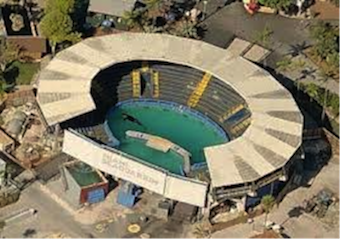As we push further into the 21st Century, there is no question that a growing proportion of humanity is starting to see the harm in keeping cetaceans in captivity. Many people and organizations, including this one, are fighting to end this immoral practice. Looking back to Ric O’Barry’s founding of Dolphin Project on Earth Day 1970, it’s gratifying to see the progress that’s been made since then.
We’ve experienced many heartbreaks over those years, but the passing of time has also been marked by memorable milestones. The huge boost to our movement that followed the release of the movie Blackfish in 2013 is one of many examples. But the momentum that event provided us has not subsided with time. Nor will it. Our coordinated activism will continue to pay dividends.
A number of countries have now banned the practice of keeping whales, dolphins and porpoises in captivity. In recent years both Canada and France joined them by passing legislation which will one day achieve this. Sadly it will be some years away for both countries as those already held will remain the legal property of their captors (though one could never truly ‘own’ another individual – not in a moral sense). But there will be no new facilities in Canada or France. No new captives taken or bred. No repeat of the outrage of lives and freedom stolen from beings as deserving of those things as we are.
Bans are already in place in Chile, Croatia, Cyprus, Luxembourg, and Slovenia. You’d also have to add Norway to that list (which is odd given that it is one of the few remaining whaling nations). Chile, Costa Rica, Australia and most recently Switzerland, have put in place major fines for anyone trying to capture marine mammals from the wild. Both houses of the Swiss parliament have also voted to pass legislation which will prevent the keeping of cetaceans in zoos or marine parks there.
The trend over most of Europe is unmistakable, and what is happening now in pockets here and there is likely to become a tide sweeping over the continent. Twelve EU member states have no dolphinaria and no captive cetaceans at all. These are: Austria, Croatia, Cyprus, Czech Republic, Estonia, Hungary, Ireland, Latvia, Luxembourg, Poland, Slovakia, and Slovenia. The United Kingdom (though no longer part of the EU) also belongs on that list. Belgium, Finland, Italy, Poland and the United Kingdom have tough legislative standards for the keeping of cetaceans in captivity.
All dolphinaria but one have to be licensed and regulated under EC Directive 1999/22, and are required to partake in conservation, research and educational activities, with the aim of promoting the conservation of the species. (Bulgaria is the exception, having opted to regulate their dolphinaria via their legislation for circuses and theatrical performances.) Now we are well aware that these activities often are used by marine parks as cover for what is really exploitation for profit. Compelling dolphins to perform stupid-pet-tricks to entertain humans hardly qualifies as conservation. Nevertheless, the thrust of the legal framework is a step in the right direction.
Public sentiment is what’s driving this process in Europe. An IPSOS poll commissioned by One Voice, a French NGO, was very revealing in that it demonstrated that the public across the EU has serious questions about the legitimacy and desirability of keeping dolphins in captivity. In Italy, to take one example, the opposition to captivity is so widespread that one has to wonder why the national government there permits these facilities to continue to exist at all.
In Spain, proposed legislation recently announced would convert all of that country’s zoos and aquaria into recovery centres for native species – a fundamental change to the nature and purpose of these facilities now. There, NGOs from across Europe had launched the SOS DELFINES (Spanish for ‘Dolphins’) campaign which urged the government to phase-out dolphin captivity. What we’re seeing now was no doubt strongly influenced by such campaigns, and the public pressure that followed. Meanwhile, in the UK, the last captive dolphin attraction closed in 1993. Though a government review brought about increased standards for things like pool sizes, water quality and care & handling which, if met, could result in new facilities being opened, it’s exceedingly unlikely to ever happen.
In the United States, the battle will need to be fought state by state, but already we’ve had some successes, with major changes to legislation affecting the display of whales and dolphins in California, Hawaii, New York and South Carolina. Others have banned the breeding of captives cetaceans, and a recent import permit granted to an aquarium in Connecticut stipulated that belugas purchased from Marineland Canada’s facility won’t be able to be bred.
In California, the cities of San Francisco and Malibu both passed resolutions in 2014 which introduced the idea that cetaceans have rights. In particular, the right to move freely within their habitat. Encouragingly, wording in one of these proclamations resolved that whales and dolphins have the right to free and safe passage and “encourages citizens of the world to do all within their power to protect them and preserve the oceans in which they were destined to spend their lives.” The other also proposes that cetaceans be “free from captivity”.
In Asia, we hit a major milestone when India earned the proud distinction of becoming the first nation, anywhere in the world, to recognize these marine mammals as sentient beings with personhood rights. In 2013 the Ministry of Environment and Forests banned the keeping of captive dolphins for public entertainment, but they also went much further. They declared that dolphins “should be seen as ‘non-human persons’ and as such should have their own specific rights.” This is a precedent we hope will, in time, be followed by every single nation on Earth.
This move by the Indian government was extremely important because today, most of the growth of the dolphin-shows-as-entertainment industry is in so-called emerging markets. These last few years, China has been leading the way, building new marine parks at an alarming pace. As these awful places gradually die out in countries where they were once long established, the abuse simply shifts to other countries, where a newly affluent public can now afford this kind of ‘entertainment’. What India did is very forward-thinking, and most commendable in the precedent it set.
Finally, in 2010, a conference on Cetacean Rights was held in Helsinki. Out of it came the Declaration on the Rights of Cetaceans, and the hope of its signatories that it would one day be universally adopted. The text of the Declaration affirms in part that:
Based on the principle of the equal treatment of all persons;
Recognizing that scientific research gives us deeper insights into the complexities of cetacean minds, societies and cultures;
Noting that the progressive development of international law manifests a growing sense of entitlement by cetaceans;
We affirm that all cetaceans as persons have the right to life, liberty and wellbeing.
So, on the one hand trends are positive and clearly in our favour. However, we need to be aware that the total numbers of cetaceans held in captivity will no doubt continue to rise for a few more years, in largest part because of the emerging markets we spoke of above. We should try to not get discouraged by this. It can feel like we’re on the losing side when we see that the numbers are going up. Worse, and as we’ve previously written on this blog, undoing the damage of even a single capture can be enormously difficult and expensive. We are, after all, doing battle with an industry which can take new captives far more cheaply and easily than we can repair the damage done.
Be aware, however, that because we’ll see the numbers going in the wrong direction for a little while longer does not mean that we’re losing the overall battle. In fact, we are not. The tide of history is clearly on our side. We’ve had many wins, and will have many more to add to those in the years ahead.
Perhaps what we should be focused on is a somewhat different metric. What percentage of the world’s total human population lives in places where whale and dolphin captivity is both illegal, and that have no remaining captives anywhere on their soil? And more importantly, is that number going up or down? Canada and France pass the first test, but fail the second. It will be some years yet before the nightmare of captivity truly comes to an end in our respective countries. But how many of us worldwide have gotten there already? That’s the measure we may want to focus on.
Today, we calculate that just over 18% of the world’s population lives in countries that meet both of these criteria, with India being by far the biggest contributor to that number. We need to get from 18% to 100%. How long that will take depends on us. Our best guess is that we expect the process to take as much as 20 to 30 years. On the one hand those are hopeful numbers, insofar as we can visualize this achievement as being within our reach. Our motivation to fight as hard as we can today is that between now and 20-30 years from now, there will be a great deal of needless suffering and exploitation that we should be able to prevent.
The world we leave to future generations will be kinder, more just, and more compassionate than this one we are living in now. We just have to want it enough to keep fighting for it.
For The Orca’s Voice,
Chris, Canadian Cetacean Alliance
Percentage of the World’s Population Living Where:
Captivity is legal and actively practiced 1 51.8%
Is now Illegal but captives remain 2 1.3%
Illegal and no longer or never was practiced 3 18.1%
Technically legal but at present no captives 4 28.3%
(Our calculation is based on data from August, 2021.)
- This is the norm and the front line in our fight with the captivity industry. Today the nations with the largest numbers of legally-held captive cetaceans include: China, Japan, most of the USA, Russia and Indonesia.
- Once a nation decides to end the practice through legislation, it will often be the case that existing facilities will be permitted to keep the cetaceans already held, but will not be permitted to get more, or to replace them. Examples as of this time are Canada and France.
- This is the ideal, and we’d hope this will one day be universal. Examples today include: Slovenia, Croatia, Luxembourg, Costa Rica, India and Chile.
- This category is more complicated, and is one we’ll need to watch carefully in the years ahead. There is good news and bad news. First the good: In the United Kingdom, as an example, captivity is not expressly banned, and there are legislative standards that if hypothetically met could result in the re-opening of a facility. However, given cultural factors at present, it is very difficult to imagine such a thing happening in the UK. I’m personally not too concerned about it. Now the bad news. So-called emerging economies present a huge opportunity for the industry to open new marine parks. The question then becomes, when affluence begins to arrive, do these nations take the path chosen by China, or go the way of India?



Leave a Reply